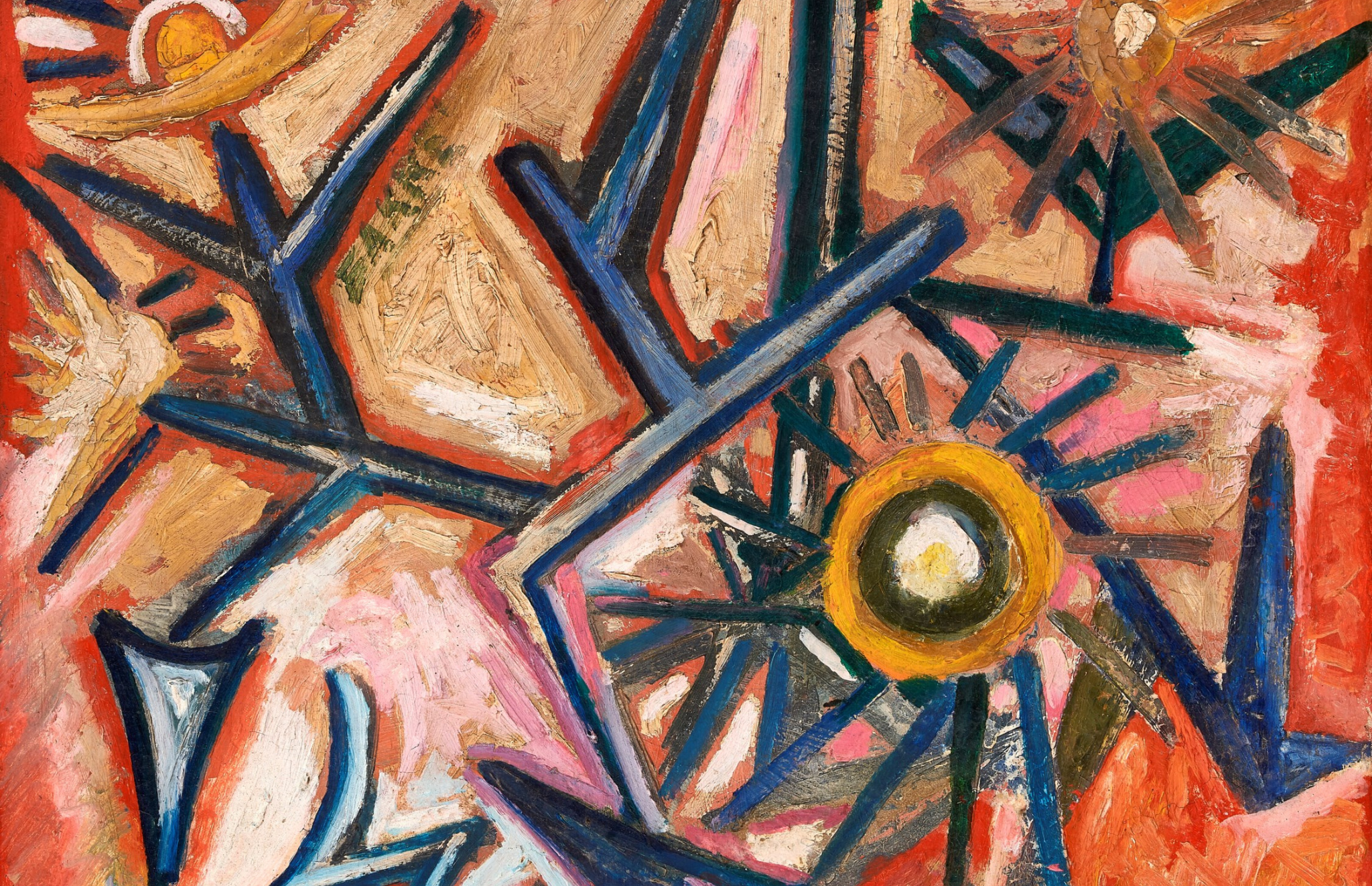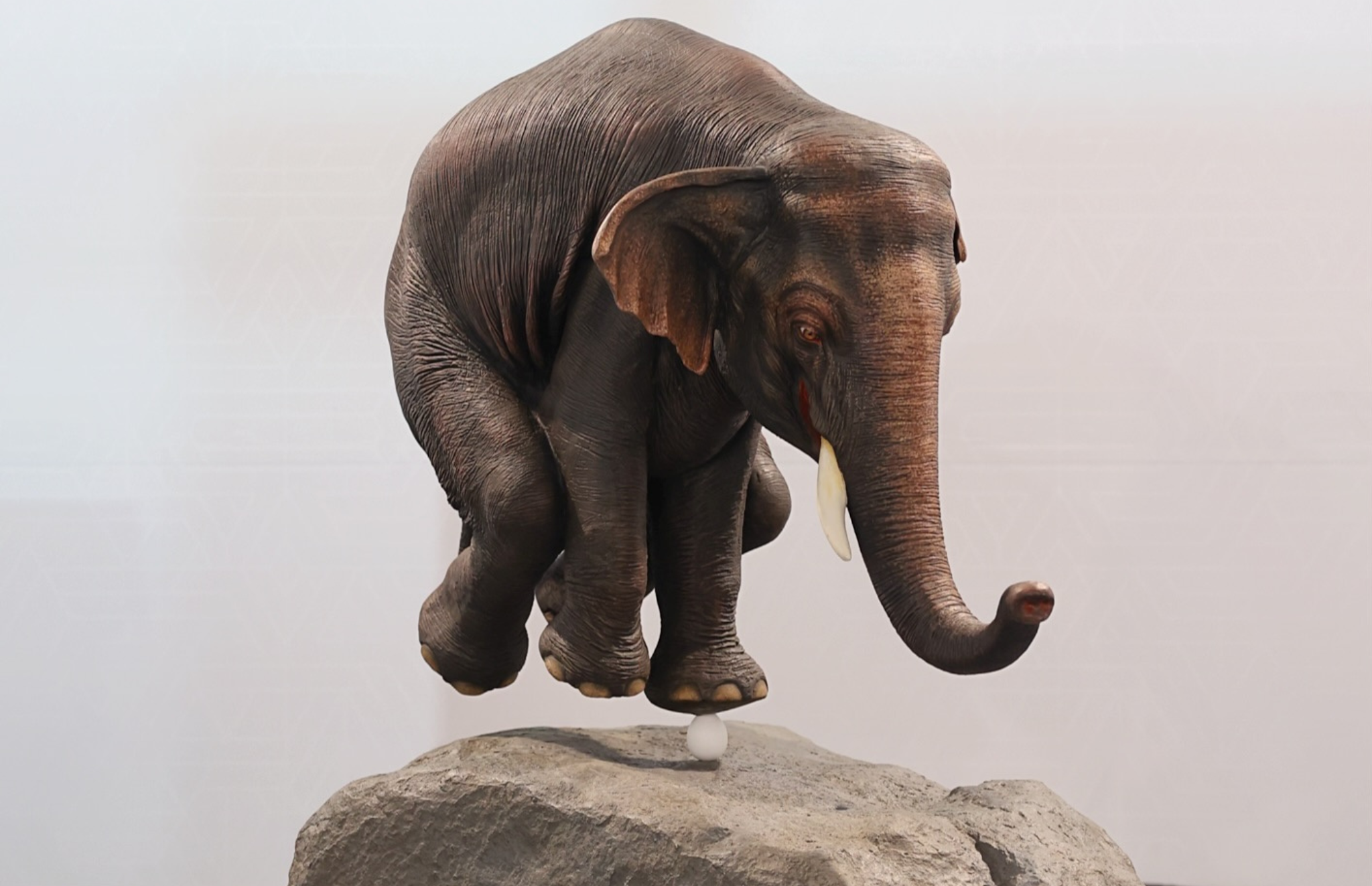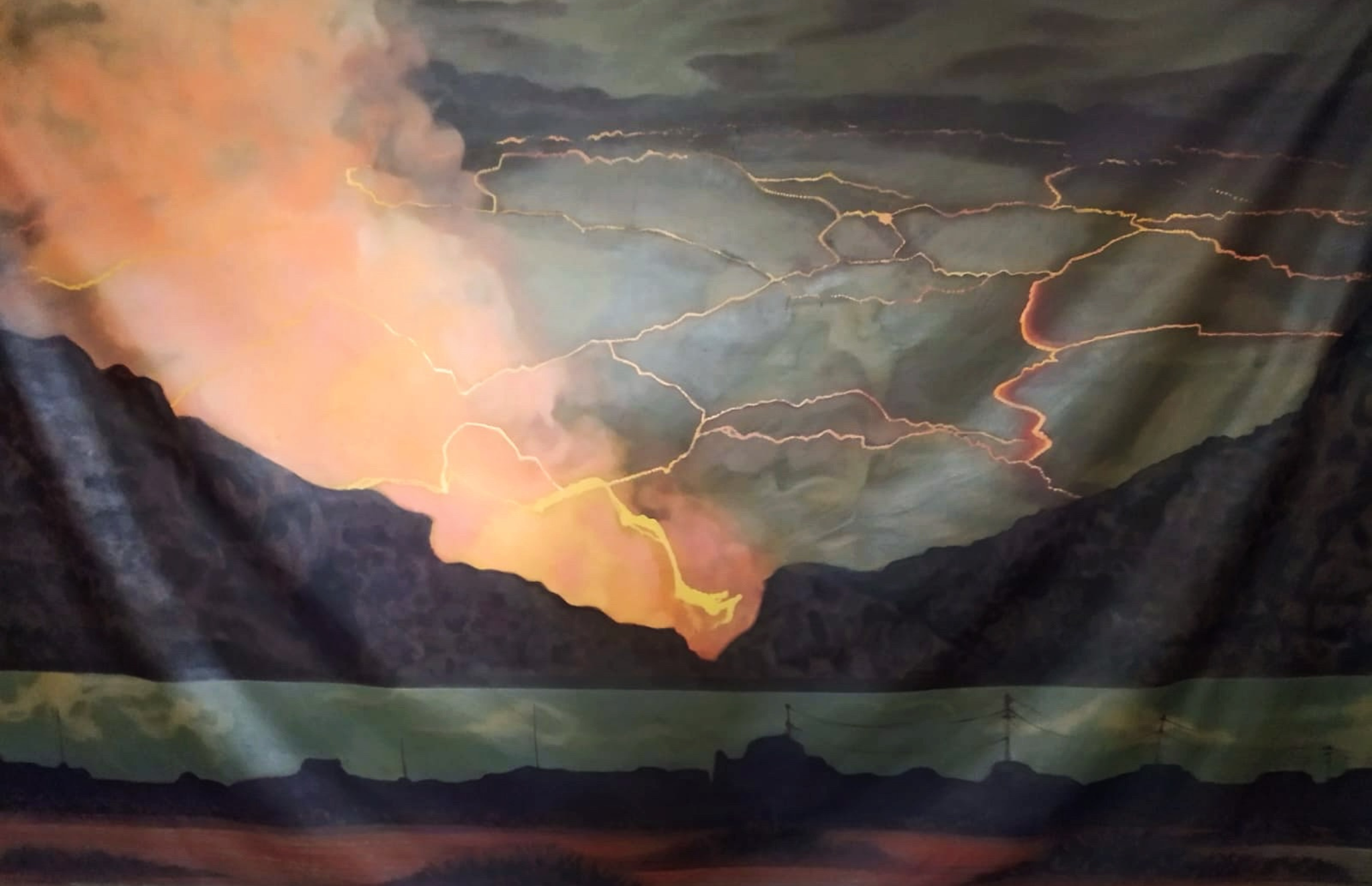ARTWORKS TO WATCH OUT FOR IN SAFFRONART’S BIGGEST AUCTION OF THE YEAR
Led by ‘Hindu Temple, Bombay’, 1884, by renowned American Orientalist Edwin Lord Weeks, this year’s biggest auction by Indian auction house Saffronart features prominent works by the country’s most revered artists.

Photo courtesy: Saffronart
Featuring works by the members of the Bombay Progressive Artists’ Group, such as S H Raza and M F Husain; Bengal School artists Ganesh Pyne and Bikash Bhattacharjee; and lots by Jehangir Sabavala, Jagdish Swaminathan, Amrita Sher-Gil, Jogen Chowdhury, B Prabha, and Jangarh Singh Shyam, among many others, the auction is going to take place at the Ballroom, The Oberoi in New Delhi on the 14th September 2024.
Here are some of the standout pieces to look out for:
1. Hindu Temple, Bombay, 1884
Edwin Lord Weeks
An American Orientalist, Edwin Lord Weeks is celebrated for his majestic depictions of South Asia and the Middle East. His works capture the architecture, daily life, and rich cultures of these regions with detailed realism.
Hindu Temple, Bombay, one of two pieces Weeks exhibited at the 1884 Paris Salon, is an extraordinary representation of Indian architecture. The piece’s historical significance, combined with its refined composition, positions it as a standout in this auction.

Photo courtesy: Saffronart
2. Untitled (Pieta), 1987 and Figures in a Landscape, 1974
F. N. Souza
Among the artists of India’s contemporary art movement, undoubtedly F. N. Souza is one of the most revered artists who worked vigorously with themes such as the body, religion, and cities. Illustrating the drama of life and the intricacies of human emotions, his head series features a man with a deformed face. Nostalgically religious, Souza’s Pieta paintings attempt to reflect the biblical scene in a highly subjective manner, which sometimes may seem polemical, wherein spirituality is commemorated with raw, unalloyed suffering.

Photo courtesy: Saffronart
In contrast, his landscape paintings represent disapproval of modern living civilization. There are postmodern and futurist layouts, mostly having artwork depicting disorderly cities and several elements emerging from them, also filled with bold colours and sharp edges. Such a diversity of styles highlights the difference in his vision and determines Souza as a pioneer of Indian modern painting.

Photo courtesy: Saffronart
3. The Earth, 1986
S H Raza
Sayed Haider Raza, a co-founder of the Bombay Progressive Artists’ Group, transformed the Indian modernist landscape. This auction features a stunning work, The Earth (1986) where geometric precision meets vibrant colour, embodying the cosmic energy central to his art.
Dominated by horizontal and diagonal lines, the canvas is divided into triangles and quadrilaterals, all framed within concentric squares. This precise, structured composition reflects Raza’s deep engagement with tantric beliefs and ancient Indian cosmology. According to Vedic scriptures, these geometric shapes — triangles, lines, and squares — represent elemental forces like wind, fire, and water, while also symbolising the union of male and female energies (purush and prakriti) that give rise to life.

Photo courtesy: Saffronart
At the top centre of the canvas sits the iconic “bindu,” a black circle pulsating with energy. This element, central to Raza’s work from the late 1970s onward, represents the cosmic seed or source of life. In this painting, the bindu is encased in a downward-facing triangle, mirrored by an upright one, symbolising the harmonious merging of male and female energies. Raza’s connection to the bindu is deeply personal; it recalls a meditative exercise from his childhood in Madhya Pradesh, where his headmaster would have him focus on a black point for concentration. This symbolic repetition reflects Raza’s belief that constant focus on a form, much like a mantra, elevates consciousness.
The painting’s palette is rich in symbolic meaning too, blending pure hues of red, white, black, and blue with earthy tones like ochre and umber. These colours evoke the richness of the Indian landscape while recalling the vibrant use of colour in the Mewar School of miniature painting. Through this work, Raza captures the essence of nature not as something merely seen but experienced, a force that pulses through every aspect of existence, linking the earthly with the cosmic.

Photo courtesy: Grosvenor Gallery, London Private Collection, New Delhi
4. Untitled (Dancing Ganesh), 2004
M F Husain
Known as the “Picasso of India,” Maqbool Fida Husain’s audacious expression, and his commitment to innovation in his work have served as inspiration for countless generations of artists. With the co-founding of the Progressive’s Artist Group (PAG) in 1947, he and S.H. Raza and K.H. Ara and other fellow artists embraced the modern Indian art language that was both global in outlook and rooted in the cultural, political, and social realities of India.
Hussain frequently depicted Hindu deities, with Ganesha holding a special place in his work. In this painting, Ganesha is shown playing the Tanpura, while a Tabla sits in the background. Vibrant patches of colour surround the instruments, infusing the scene with movement and energy. Hussain’s deep connection to music and his desire to bring musicality into his art are clearly reflected in this piece.

Photo courtesy: Saffronart
5. Untitled (Indian Temples)
Ganesh Pyne
Ganesh Pyne, a master of the Bengal School, was known for his dark, surrealist works that merged folklore, personal trauma, and existential themes. His use of tempera gave his art an ethereal, haunting quality.
Pyne, known for his reserved nature, seldom ventured out in his youth. This sketchbook from 1961, the year he graduated from the Government College of Art, Calcutta, captures his trip to Orissa, where he sketched temple architecture from Puri, Bhubaneswar, Konark, and Khandagiri. It also includes drawings from other regions, like Karnataka’s Durga temple in Aihole. These early sketches showcase his technical skill and eye for detail, which became hallmarks of his later work. Pyne’s fascination with architecture later surfaced in his art, using architectural elements as metaphors to evoke deeper meanings.

Photo courtesy: Saffronart
6. Untitled
Jamini Roy
Born in 1887 in Beliatore, Bankura, West Bengal, Jamini Roy emphasised simplicity, strength, and nurturing love in his works. Rejecting modernist trends, Roy’s stylized figures embraced Bengali folk art and traditional Indian motifs, marking a significant shift in Indian modern art. One of the paintings displayed at the auction depicts the bond between mother and child with minimalism and grace. The woman is painted in bold lines and earthy tones, making his subjects both iconic and deeply connected to India’s cultural roots.

Photo courtesy: Saffronart
7. Untitled
B Prabha
B Prabha is best known for her elegant depictions of rural women, often portrayed with elongated forms and a sense of quiet resilience. Her art highlights the simplicity and strength of Indian women, especially in the rural landscape. Prabha’s works are timeless, embodying both grace and a deep emotional resonance.
In the painting at sale at the auction, B. Prabha illustrated elongated figures of rural women in bright and earthy tones, highlighting their daily lives and the pressing issues of drought, hunger, and homelessness that they faced.
Text by Shalini Passi
Image Courtesy: Saffronart and Grosvenor Gallery
Find out more about the auction here:
https://www.saffronart.com/auctions/PreCatalog.aspx?eid=4816
https://www.saffronart.com/auctions/souza-day-sale-2024-4839





